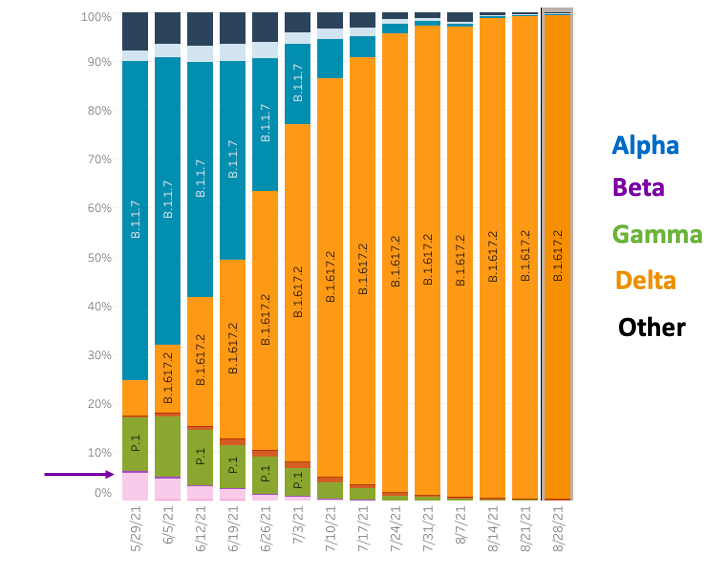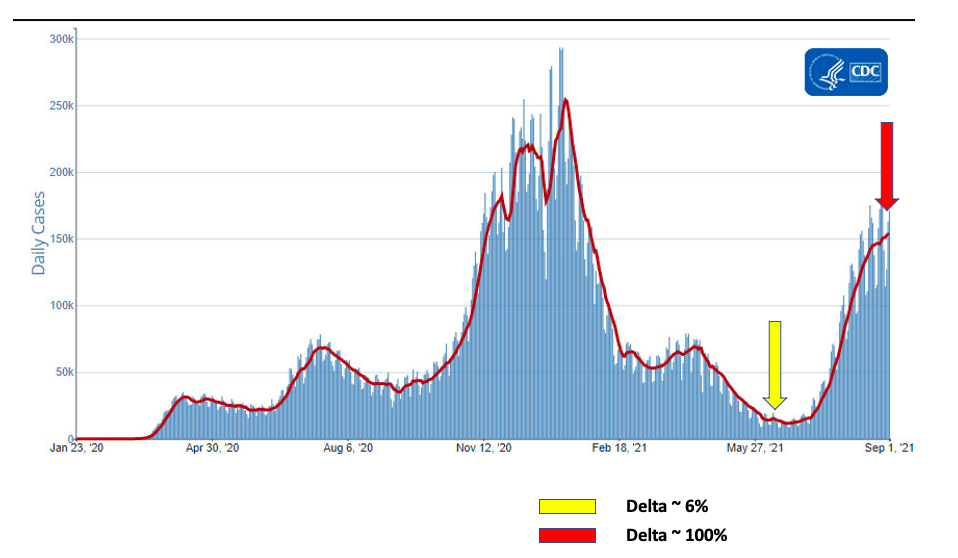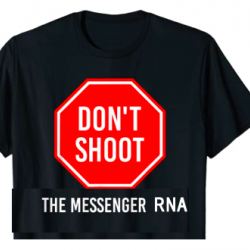I get it. People are sick and tired of COVID and endlessly cranky about having to deal with the changing facts and rules. Some of this discontent is expressed as dissatisfaction with the vaccines. While this frustration may be understandable it is not warranted. The vaccines are nothing short of a medical miracle. Don't shoot the messenger RNA. Blame the virus.
I'm sure seeing a lot of vaccine disquietude going around in the past few months. Some of it, of course, is from the anti-vax-hydroxychloroquine-vitamin D-natural immunity-microchip crowd but a surprising amount is coming from rational people who are pissed at the vaccines for not "doing well enough." As if we have some inalienable right to be entirely protected from a new and deadly pathogen from a single shot, or even a second. And now that health authorities (depending on the day of the week you ask) are either recommending a third shot – or not. Not surprisingly, I'm seeing downright hostility toward them, but also toward the jabs. Such indignation because we're still dealing with this mess!
"Perhaps we should be discussing therapies instead of vaccines that are--by all reckoning--losing their mojo."
"It's taking a vaccine for nothing and subjecting yourself to the 24-48 hours of side effects, and giving a false hope that it will raise the effectiveness of the vaccine when we already know it doesn't."
"How does injecting more of the wrong spike protein vaccine help when we know that regular vaccine doesn’t give full protection? It doesn’t make any logical sense."
Don't Shoot the Messenger RNA
Perhaps a brief retrospective will encourage the cranky amongst us to redirect their animosity to where it should be—at the virus (1), because the science and medicine required to get us to this point in such a short time is nothing short of astounding. Let's take a look at how far we've come. We can call it "A Stroll Down Memory Strain."
Chapter One: Making Good News Out of Really Bad News
December 2019 - Someone, almost certainly in Wuhan, China, walks out of a wet market, a lab, or a Burger King – this will probably never be agreed upon – infected with a virus that will later become SARS-CoV-2. Roughly 19 months later, that person will have infected about 219 million others worldwide (2).
December 31, 2019 - The World Health Organization (WHO) obtains a news release from the Wuhan Municipal Health Commission concerning cases of "viral pneumonia" in Wuhan.
January 9, 2020 - Chinese health authorities confirm an outbreak of a "novel coronavirus," the name that the virus will keep until February.
January 11 - The World Health Organization announces that the genetic sequence of the virus is revealed in a tweet from the Chinese. The first death from the coronavirus is announced by Chinese media this same day.
January 13 - Moderna, an American biotech, selects the sequence to use in its experimental vaccine mRNA-1273, in preparation for manufacture.
Time Out
Let's take a break here and recognize what transpired so far. Two weeks after the first mention of "coronavirus" and two days after the genetic sequence of the virus was released Moderna had determined the precise mRNA sequence that would eventually become its vaccine mRNA-1273. This is an unprecedented medical milestone.
January 14 - The People’s Republic of China, in what will go down as one of the great understatements in history, acknowledges: “it is certainly possible that there is a limited human-to-human transmission." The WHO compounds this with a tweet of historic (dis)proportions:

The first WHO tweet on the transmission of COVID is a real doozie. And not especially prescient.
January 25 - BioNtech, a German biotech, proposes the first set of 20 potential mRNA vaccines based on the genetic code of the spike protein. This will be whittled down to one, which will later be called BNT162b2, the "Pfizer vaccine," (aka Comirnaty).
March 11 - WHO uses the "P" word - pandemic - for the first time.
March 16 - Moderna begins clinical trials of mRNA-1273 in healthy volunteers, three months after the structure of the mRNA in the vaccine is first put down on paper.
March 30th - BioNtech, already partnered with Pfizer to research better flu shots, agrees to a COVID partnership.
May 5 - Pfizer begins clinical trials of BNT162b2 in healthy volunteers.
November 9 - With the world on edge, Pfizer announces >90% efficacy in Phase 3 trials. Some experts had considered 50+% to be acceptable. The DJIA closes up 835 points.
November 20 - Moderna announces that vaccine efficacy against COVID-19 infection was 94.1% and vaccine efficacy against severe COVID-19 was 100% in Phase 3 trials.
December 11 - The FDA grants Emergency Use Authorization (EUA) to Pfizer.
December 14 - Sandra Lindsay, a critical care nurse at Long Island Jewish Medical Center in Queens, NY. becomes the first person in the US to be vaccinated.
December 18 - The FDA grants Emergency Use Authorization (EUA) to Moderna's mRNA-1273. Both vaccines would be fully approved by the FDA in August 2021.
Part Two: Good News Lasts About A Day
December 18 - The Alpha (B.1.1.7) variant, originally found in Britain, is named a Variant of Concern (VOC).
January 14, 2021 - The Beta (B.1.351) variant, originally from South Africa, is designated a VOC.
January 15 - The Gamma (P.1) variant, originally from Brazil, is designated a VOC.
May 6 - The Delta variant( (B.1.617.2), originally from India in December 2020, is designated a VOC. They weren't kidding around, This is why we are once again facing an enemy that we thought we'd already defeated. Right now, COVID is Delta in most places.

Source: CDC Covid data tracker. The UK Alpha variant (blue) accounted for most US COVID cases at the end of May. Neither Beta (South Africa) nor Gamma (Brazil) took hold in the US. Delta, only a minor contributor at the time, took over entirely in three months. It now causes close to 100% of COVID infections. Can it really be a surprise that "first-generation" vaccines are less effective now?
Please, Stop Complaining
The now-famous Delta variant was first isolated in India in December 2020, almost a year after the mRNA vaccines were first designed. Consider the following questions.
1. Could you have predicted that a variant would emerge in such a short time and be so badass that approved vaccines might not handle it as well and additional shots may be needed? No, you couldn't. Neither could anyone else. Blame the virus.
2. Delta hit the US sometime around May. Infections took off around May. Is this a coincidence? No, it isn't. Delta came out of hell and took over. Blame the virus.

Source: CDC
3. Are we going to need a shot every year? Or more often? Maybe. Pfizer has just manufactured the first batch of mRNA that encodes for the Delta spike. As I have written, the spikes of Delta and the original virus differ by only one out of 1,372 amino acids that make up the spike protein. Even this seemingly small change produced a very big effect.
4. Will that be the end of this nightmare? Who knows? It is likely that a Delta-based vaccine will be as easy to manufacture as the original, probably have the same safety profile, and also be more effective in neutralizing Delta. Or, it is possible that Delta may burn itself out. But there are a lot more letters in the Greek alphabet, and it's possible that we will see a Delta Deluxe. No one knows. In fact, the Los Angeles Times just reported that 167 people in L.A. have been infected by the mu variant.
This dynamic chapter in medical history hasn't been written yet, but one day it will be and we will read about an unprecedented global spread of a deadly new pathogen, a massive effort to try to control it, and a textbook example of making a technology work where it never worked before. And, despite all of this, maddening uncertainty at every turn. Medical science has accomplished the impossible, but it still may not be enough.
Don't shoot the messenger RNA. blame the virus.
NOTES:
(1) Reserve some blame for those who have refused to be vaccinated, although the emergence of the multiple variants we're now coping with would have almost certainly happened anyhow.
(2) These are confirmed cases. The number of infections is certainly much larger.

